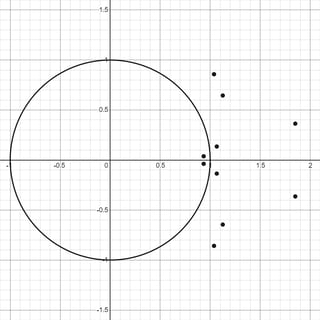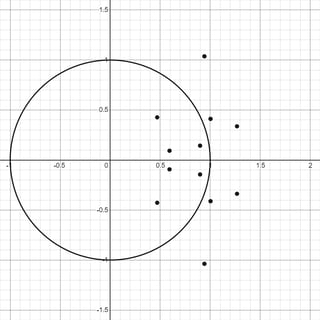Let $K_\infty/\mathbb{Q}$ denote the $\hat{\mathbb{Z}}$-extension of $\mathbb{Q}$. Then for each $n\geq1$, $K_\infty$ has a unique subfield $K_n$ of degree $n$ over $\mathbb{Q}$.
The fields $K_n$ are rather nice:
- $K_n$ is Galois over $\mathbb{Q}$, and $\mathrm{Gal}(K_n/\mathbb{Q})$ is cyclic of order $n$ (so Kronecker-Weber applies),
- The subfields of $K_n$ are exactly $K_m$ for $m\mid n$,
- $K_n$ is totally real,
- It is conjectured that $K_{p^j}$ always has class number 1 (see this answer).
I was looking through these fields in the LMFDB (links at the end of this question), and I noticed something peculiar: $$\begin{array}{l|l} n&\lim_{s\to1^+}(s-1)\zeta_{K_n}(s)\\\hline 1&1\\ 2&0.623225240141\\ 3&0.3774610891760\\ 4&0.431652451862\\ 5&0.411382062671\\ 6&0.26281913742\\ 7&0.29967691809\\ 8&0.3399574212\\ 9&0.231073814089\\ 10&0.59812750863\\ 11&\mathbf{\color{red}{10.9924154253}}\\ 12&0.272503409905\\ 13&0.480494415585\\ 14&0.303247583959919\\ 15&0.126218760817\\ 16&0.271689000529\\ 17&0.149703203263054\\ 18&0.121386452739\\ \end{array}\qquad\qquad\qquad\begin{array}{l|l} n&\lim_{s\to1^+}(s-1)\zeta_{K_n}(s)\\\hline 19&0.127769546503240\\ 20&0.148293571484876\\ 21&0.325798468160489\\ 22&0.481687105754706\\ 23&0.123796267561194\\ 24&0.139575702501298\\ 25&0.167117342071058\\ 26&0.522724794223398\\ 27&0.174105094869797\\ 28&0.448262864859088\\ 29&0.239734187517100\\ 30&0.106243397680971\\ 31&\\ 32&0.278099976864148\\ 33&\mathbf{\color{red}{10.8513191982336}}\\ 34&\\ 35&\\ 36&0.121939637724450 \end{array}$$ For these values of $n$, the limit always lies in the interval $[0.1,1]$, except for $n=11$ and $n=33$ (but not $n=22$), where the limit is over $10$ times larger!
Why is the residue of the pole of $\zeta_{K_n}(s)$ so large for $n=11$? (and also $n=33$, but not $n=22$)
Here are two potential ways of approaching the question:
- If $p$ is an odd prime then $\Delta_{K_p}=p^{2(p-1)}$ and conjecturally $h_{K_p}=1$ so we have $$\lim_{s\to1^+}(s-1)\zeta_{K_p}(s)=(2/p)^{p-1}\mathrm{Reg}_{K_p}.$$ Thus, the question could be phrased as:
Why is the regulator of $K_{11}$ so large?
- We have $\lim_{s\to1^+}(s-1)\zeta_{K_n}(s)=\prod_{\chi\neq1}L(1,\chi)$. Here are pictures of $L(1,\chi)$ for $n=7,11,13$. Of course, these pictures don't really explain anything by themselves.
$p=7$ (mostly in the unit circle so the product is small, $\approx0.3$)

$p=11$ (almost entirely outside of the unit circle so the product is large, $\approx11$)

$p=13$ (mostly in the unit circle so the product is small, $\approx0.5$)

Here are the LMFDB links:
$K_1$ $K_2$ $K_3$ $K_4$ $K_5$ $K_6$ $K_7$ $K_8$ $K_9$ $K_{10}$ $K_{11}$ $K_{12}$ $K_{13}$ $K_{14}$ $K_{15}$ $K_{16}$ $K_{17}$ $K_{18}$ $K_{19}$ $K_{20}$ $K_{21}$ $K_{22}$ $K_{23}$ $K_{24}$ $K_{25}$ $K_{26}$ $K_{27}$ $K_{28}$ $K_{29}$ $K_{30}$ $K_{31}$ $K_{32}$ $K_{33}$ $K_{34}$ $K_{35}$ $K_{36}$
